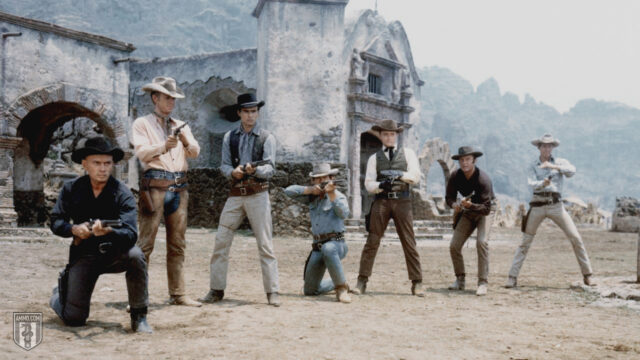
Chances are that you’ve never heard of General Laney. He hasn’t had a brilliant military career, at least as far as I know. In fact, I’m not certain that he’s even served in the military. General, you see, isn’t Laney’s rank. General is Laney’s first name. General Laney does, however, have a claim to fame, unrecognized though it may be.
Detroit resident General Laney is the founder and prime mover behind a little publicized organization known as the National Black Sportsman’s Association, often referred to as “the black gun lobby.” Laney pulls no punches when asked his opinion of gun control: “Gun control is really race control. People who embrace gun control are really racists in nature. All gun laws have been enacted to control certain classes of people, mainly black people, but the same laws used to control blacks are being used to disarm white people as well.”
Laney is not the first to make this observation. Indeed, allied with sportsmen in vocal opposition to gun controls in the 1960s were the militant Black Panthers. Panther Minister of Information, Eldridge Cleaver noted in 1968: “Some very interesting laws are being passed. They don’t name me; they don’t say, take the guns away from the niggers. They say that people will no longer be allowed to have (guns). They don’t pass these rules and these regulations specifically for black people, they have to pass them in a way that will take in everybody.”
Some white liberals have said essentially the same thing. Investigative reporter Robert Sherrill, himself no lover of guns, concluded in his book The Saturday Night Special that the object of the Gun Control Act of 1968 was black control rather than gun control. According to Sherrill, Congress was so panicked by the ghetto riots of 1967 and 1968 that it passed the act to “shut off weapons access to blacks, and since they (Congress) probably associated cheap guns with ghetto blacks and thought cheapness was peculiarly the characteristic of imported military surplus and the mail-order traffic, they decided to cut off these sources while leaving over-the-counter purchases open to the affluent.” Congressional motivations may have been more complex than Sherrill suggests, but keeping blacks from acquiring guns was certainly a large part of that motivation. (Incidentally, the Senate has passed legislation that would repeal the more-onerous provisions of the 1968 act. The bill faces an uncertain future in the House of Representatives.)
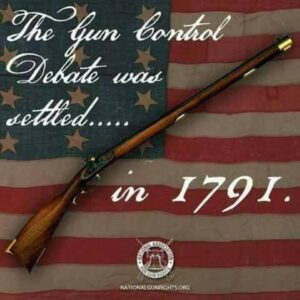 There is little doubt that the earliest gun controls in the United States were blatantly racist and elitist in their intent. San Francisco civil-liberties attorney Don B. Kates, Jr., an opponent of gun prohibitions with impeccable liberal credentials (he has been a clerk for radical lawyer William Kunstler, a civil rights activist in the South, and an Office of Economic Opportunity lawyer), describes early gun control efforts in his book Restricting Handguns: The Liberal Skeptic Speak Out. As Kates documents, prohibitions against the sale of cheap handguns originated in the post-Civil War South. Small pistols selling for as little as 50 or 60 cents became available in the 1870s and ’80s, and since they could be afforded by recently emancipated blacks and poor whites (whom agrarian agitators of the time were encouraging to ally for economic and political purposes), these guns constituted a significant threat to a southern establishment interested in maintaining the traditional structure.
There is little doubt that the earliest gun controls in the United States were blatantly racist and elitist in their intent. San Francisco civil-liberties attorney Don B. Kates, Jr., an opponent of gun prohibitions with impeccable liberal credentials (he has been a clerk for radical lawyer William Kunstler, a civil rights activist in the South, and an Office of Economic Opportunity lawyer), describes early gun control efforts in his book Restricting Handguns: The Liberal Skeptic Speak Out. As Kates documents, prohibitions against the sale of cheap handguns originated in the post-Civil War South. Small pistols selling for as little as 50 or 60 cents became available in the 1870s and ’80s, and since they could be afforded by recently emancipated blacks and poor whites (whom agrarian agitators of the time were encouraging to ally for economic and political purposes), these guns constituted a significant threat to a southern establishment interested in maintaining the traditional structure.
Consequently, Kates notes, in 1870 Tennessee banned “selling all but ‘the Army and Navy model’ handgun, i.e., the most expensive one, which was beyond the means of most blacks and laboring people.” In 1881, Arkansas enacted an almost identical ban on the sale of cheap revolvers, while in 1902, South Carolina banned the sale of handguns to all but “sheriffs and their special deputies–i.e., company goons and the KKK.” In 1893 and 1907, respectively, Alabama and Texas attempted to put handguns out of the reach of blacks and poor whites through “extremely heavy business and/or transactional taxes” on the sale of such weapons. In the other Deep South states, slavery-era bans on arms possession by blacks continued to be enforced by hook or by crook.
The cheap revolvers of the late 19th and early 20th centuries were referred to as “Suicide Specials,” the “Saturday Night Special” label not becoming widespread until reformers and politicians took up the gun control cause during the 1960s. The source of this recent concern about cheap revolvers, as their new label suggests, has much in common with the concerns of the gunlaw initiators of the post-Civil War South. As B. Bruce-Briggs has written in the Public Interest, “It is difficult to escape the conclusion that the ‘Saturday Night Special’ is emphasized because it is cheap and is being sold to a particular class of people. The name is sufficient evidence–the reference is to ‘niggertown Saturday night.'”
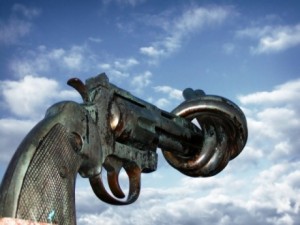 Those who argue that the concern about cheap handguns is justified because these guns are used in most crimes should take note of Under the Gun: Weapons, Crime, and Violence in America, by sociologists James D. Wright, Peter H. Rossi, and Kathleen Daly. The authors, who undertook an exhaustive, federally funded, critical review of gun issue research, found no conclusive proof that cheap handguns are used in crime more often than expensive handguns. (Interestingly, the makers of quality arms, trying to stifle competition, have sometimes supported bans on cheap handguns and on the importation of of cheap military surplus weapons. Kates observes that the Gun Control Act of 1968, which banned mail-order gun sales and the importation of military surplus firearms, “was something domestic manufacturers had been impotently urging for decades.”) But the evidence leads one to the conclusion that cheap handguns are considered threatening primarily because minorities and poor whites can afford them.
Those who argue that the concern about cheap handguns is justified because these guns are used in most crimes should take note of Under the Gun: Weapons, Crime, and Violence in America, by sociologists James D. Wright, Peter H. Rossi, and Kathleen Daly. The authors, who undertook an exhaustive, federally funded, critical review of gun issue research, found no conclusive proof that cheap handguns are used in crime more often than expensive handguns. (Interestingly, the makers of quality arms, trying to stifle competition, have sometimes supported bans on cheap handguns and on the importation of of cheap military surplus weapons. Kates observes that the Gun Control Act of 1968, which banned mail-order gun sales and the importation of military surplus firearms, “was something domestic manufacturers had been impotently urging for decades.”) But the evidence leads one to the conclusion that cheap handguns are considered threatening primarily because minorities and poor whites can afford them.
Attempts to regulate the possession of firearms began in the northern states during the early part of the 20th century, and although these regulations had a different focus from those that had been concocted in the South, they were no less racist and elitist in effect or intent. Rather than trying to keep handguns out of the price range that blacks and the poor could afford, New York’s trend-setting Sullivan Law, enacted in 1911, required a police permit for legal possession of a handgun. This law made it possible for the police to screen applicants for permits to posses handguns, and while such a requirement may seem reasonable, it can and has been abused.
Members of groups not in favor with the political establishment or the police are automatically suspect and can easily be denied permits. For instance, when the Sullivan Law was enacted, southern and eastern European immigrants were considered racially inferior and religiously and ideologically suspect. (Many were Catholics or Jews, and a disproportionate number were anarchists or socialists.) Professor L. Kennett, coauthor of the authoritative history The Gun in America, has noted that the measure was designed to “strike hardest at the foreign-born element,” particularly Italians. Southern and eastern European immigrants found it almost impossible to obtain gun permits.
Over the years, application of the Sullivan Law has become increasingly elitist as the police seldom grant handgun permits to any but the wealthy or the politically influential. A beautiful example of this hypocritical elitism is the fact that while the New York Times often editorializes against the private possession of handguns, the publisher of that newspaper, Arthur Ochs Sulzberger, has a hard-to-get permit to own and carry a handgun. Another such permit is held by the husband of Dr. Joyce Brothers, the pop psychologist who has claimed that firearms ownership is indicative of male sexual inadequacy.
Gun-control efforts through the centuries have been propelled by racist and elitist sentiments. Even though European aristocrats were members of a weapons-loving warrior caste, they did their best to keep the gun from becoming a weapon of war. It was certainly all right to kill with civilized weapons such as the sword, the battle ax, or the lance; these were weapons that the armored knights were trained to use and which gave them a tremendous advantage over commoners who didn’t have the knights’ training or possess their expensive weapons and armor. But guns, by virtue of being able to pierce armor, democratized warfare and made common soldiers more than a match for the armored and aristocratic knights, thereby threatening the existence of the feudal aristocracy.
As early as 1541, England enacted a law that limited legal possession of handguns and crossbows (weapons that were considered criminally dangerous) to those with incomes exceeding 100 pounds a year, though long-gun possession wasn’t restricted–except for Catholics, a potentially rebellious minority after the English Reformation. Catholics couldn’t legally keep militia-like weapons in their homes, as other Englishmen were encouraged to do, but they could legally possess defensive weapons–except, as Bill of Rights authority Joyce Lee Malcolm has noted in her essay “The Right to Keep and Bear Arms: The Common Law Tradition,” during times “of extreme religious tension.”
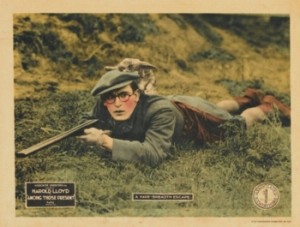 According to Malcolm, when William and Mary came to the English throne, they were presented with a list of rights, one of which was aimed at staving off any future attempt at arms confiscation–“all Protestant citizens had a right to keep arms for their defence.” England then remained free of restrictive gun legislation until 1920 when, even though the crime rate was very low, concern about the rebellious Irish and various political radicals ushered in today’s draconian gun laws. (Colin Greenwood, former superintendent of the West Yorkshire Metropolitan Police, has discovered in his research at Cambridge University that the English gun crime rate is significantly higher now than it was before that nation’s strict gun laws were enacted.)
According to Malcolm, when William and Mary came to the English throne, they were presented with a list of rights, one of which was aimed at staving off any future attempt at arms confiscation–“all Protestant citizens had a right to keep arms for their defence.” England then remained free of restrictive gun legislation until 1920 when, even though the crime rate was very low, concern about the rebellious Irish and various political radicals ushered in today’s draconian gun laws. (Colin Greenwood, former superintendent of the West Yorkshire Metropolitan Police, has discovered in his research at Cambridge University that the English gun crime rate is significantly higher now than it was before that nation’s strict gun laws were enacted.)
Alas, the European aristocracy wasn’t able to control gun use, and at least in part, the spread of effective firearms helped to bring down aristocracy and feudalism. By contrast, in 17th-century Japan the ruling Tokugawa Shogunate was able to to establish a rigidly stratified society that deemphasized the development of guns and restricted arms possession to a warrior aristocracy, the samurai. When Commodore Perry “reopened” Japan to the rest of the world, in the middle of the 19th century, few Japanese were familiar with guns (the sword was the most honored weapon of the samurai) and the most common guns were primitive matchlocks similar to those introduced to Japan by the Portuguese in the middle of the 16th century. As post-Perry Japan modernized and acquired a modern military, it also quickly developed modern weaponry. But a citizenry without a gun-owning tradition was easily kept in place in a collectivist society where individuals were more susceptible to formal and informal social controls than are westerners.
The preceding are just samples of the political uses to which gun controls have been put throughout the world. Nazi Germany, the Soviet Union, and South Africa are modern examples of repressive governments that use gun control as a means of social control. Raymond G. Kessler, a lawyer-sociologist who has provided some of the most sociologically sophisticated insights into the gun control issue, suggests in a Law and Policy Quarterly article that attempts to regulate the civilian possession of firearms have five political functions. They “(1) increase citizen reliance on government and tolerance of increased police powers and abuse; (2) help prevent opposition to the government; (3) facilitate repressive action by government and its allies; (4) lesson the pressure for major or radical reform; and (5) can be selectively enforced against those perceived to be a threat to government.”
Of course, while many gun control proponents might acknowledge that such measures have been used in the ways Kessler lists, they would deny that the controls that they support are either racist or elitist, since they would apply to everybody and are aimed at reducing violence for everybody. Yet the controls that they advocate are in fact racist and elitist in effect, and only the naive or the dishonest can deny their elitist intent.
Kessler has also written that while liberals are likely to sympathize with the poor and minorities responsible for much of this nation’s violent crime, when the are victimized themselves, “or when they hear of an especially heinous crime, liberals, like most people, feel anger and hostility toward the offender. The discomfort of having incompatible feelings can be alleviated by transferring the anger away from the offender to an inanimate object–the weapon.”
A perfect example of this transference is provided by Pete Shields, the chairman of Handgun Control Inc., whose son was tragically murdered by one of San Francisco’s Zebra killers–blacks who were killing whites at random in the early 1970s. This killing was carried out by a black man who was after whites–his own skin color and that of the victim were important to the killer–but in his grief, the white liberal father couldn’t blame the criminal for this racist crime. So the gun was the culprit. The upshot is that we now have Handgun Control Inc., with its emphasis on the weapon used to commit a crime rather than the criminal. Yet blacks and minorities, who would be prevented from defending themselves, are likely to be harmed most by legislation proposed by Handgun Control Inc., the National Coalition to Ban Handguns, and other proponents of strict handgun controls.
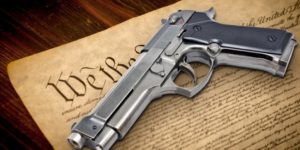 Since the illegal possession of a handgun (or of any gun) is a crime that doesn’t produce a victim and is unlikely to be reported to the police, handgun permit requirements or outright handgun prohibitions aren’t easily enforced. And as civil liberties attorney Kates has observed, when laws are difficult to enforce, “enforcement becomes progressively more haphazard until at last the laws are used only against those who are unpopular with the police.” Of course minorities, especially minorities who don’t “know their place,” aren’t likely to be popular with the police, and these very minorities, in the face of police indifference or perhaps even antagonism, may be the most inclined to look to guns for protection–guns that they can’t acquire legally and that place them in jeopardy if possessed illegally. While the intent of such laws may not be racist, their effect most certainly is.
Since the illegal possession of a handgun (or of any gun) is a crime that doesn’t produce a victim and is unlikely to be reported to the police, handgun permit requirements or outright handgun prohibitions aren’t easily enforced. And as civil liberties attorney Kates has observed, when laws are difficult to enforce, “enforcement becomes progressively more haphazard until at last the laws are used only against those who are unpopular with the police.” Of course minorities, especially minorities who don’t “know their place,” aren’t likely to be popular with the police, and these very minorities, in the face of police indifference or perhaps even antagonism, may be the most inclined to look to guns for protection–guns that they can’t acquire legally and that place them in jeopardy if possessed illegally. While the intent of such laws may not be racist, their effect most certainly is.
Today’s gun-control battle, like those of days gone by, largely breaks down along class lines. Though there are exceptions to the rule, the most dedicated and vociferous proponents of strict gun controls are urban, upper-middle-class or aspiring upper-middle-class, pro-big-government liberals, many of whom are part of the New Class (establishment intellectuals and the media), and most of whom know nothing about guns and the wide range of legitimate uses to which they are regularly put to use. Many of these elitists make no secret of their disdain for gun-owners. For instance, Gov. Mario Cuomo of New York recently dismissed those who are opposed to the Empire State’s mandatory seat-belt law as “NRA hunters who drink beer, don’t vote, and lie to their wives about where they were all weekend.”
On the other hand, the most dedicated opponents of gun control are often rural – or small-town-oriented, working – or middle-class men and women, few of whom possess the means to publicize their views, but many of whom know a great deal about the safe and lawful uses of guns. To these Americans, guns mean freedom, security, and wholesome recreation. The battle over gun controls, therefore, has come about as affluent America has attempted to impose its anti-gun prejudices on a working-class America that is comfortable with guns (including handguns), seldom misuses them (most gun crime is urban), and sees them as protection against criminal threats and government oppression.
How right you are, General Laney. “All gun laws have been enacted to control certain classes of people….”
Written by William R. Tonso and published by The New Yorker ~ December 1985
Copyright © 1985 Reason Foundation. Originally published as 17 Reason 22 (Dec. 1985). Reprinted, with permission, from the December 1985 issue of Reason Magazine. Copyright 1998 by the Reason Foundation, 3415 S. Sepulveda Blvd, Suite 400, Los Angeles, CA 90034. www.reason.com. William R. Tonso is a professor of sociology at the University of Evansville and the author of Gun and Society.
